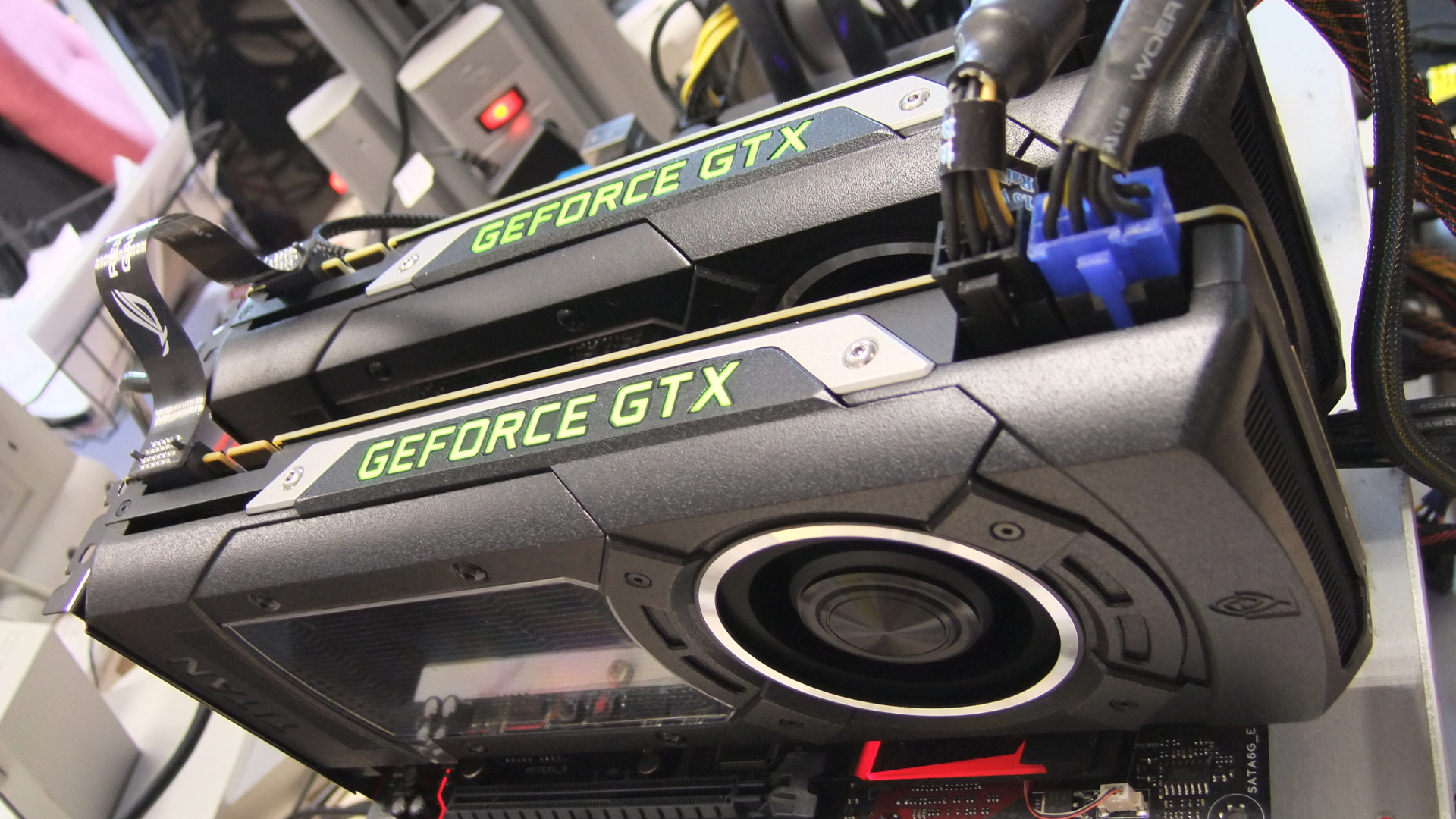Hardware report card: Nvidia vs AMD

Graphics driver updates and performance
I remember buying a $2000 laptop in 2006 with grand designs: its AMD processor and ATI GPU would be powerful enough to play games that the average laptop would choke on. And I also remember the neverending nightmare that dealing with drivers for that graphics card turned out to be: I eventually had to go to third-party drivers to get the laptop to play nice with my TV. Drivers were a problem for ATI a decade ago, and they still seem to be a problem for AMD today.
As our colleagues at Maximum PC pointed out in their Fury X review, Nvidia released 10 WHQL GameReady drivers in 2014 and has released eight in the first half of 2015. AMD released four in 2014, and hasn’t released a single one since December. AMD does put out beta driver releases roughly once per month, but they can and should do better about optimizing for new game releases and getting those out to all gamers, not just the ones seeking out beta releases.
Nvidia’s GameReady drivers aren’t guaranteed to offer great performance for a new game. Sometimes performance improves significantly in driver releases post-launch, and sometimes those launch-day drivers have issues with SLI performance or other graphical features. But Nvidia is better than ever at frequently updating its drivers, which means those launch problems are less frequent and fixed more quickly. Nvidia has also worked hard in recent years to improve driver support for multi-GPU SLI setups.

When The Witcher 3 was released, some Nvidia card owners pointed out that the game performed poorly on 700 series Kepler GPUs, and that Nvidia was deliberately crippling Kepler’s performance to push sales of its newer Maxwell cards. Afterwards, Nvidia released the 353.06 driver that delivered some performance improvements on Kepler cards. As for Nvidia sabotaging Kepler’s performance over time, it’s hard to find any real evidence of that, and that assumption ignores the incredible complexity of modern games, the millions of lines of code that go into making drivers compatible with a vast array of games and hardware, and the changes in GPU technology that make newer hardware more efficient at certain tasks. From what we’ve seen, Kepler performance has remained equivalent, or even improved slightly, with driver releases since 2013.
Frequent driver releases are important, but not as important as driver performance. While most benchmarks use average framerates as a guide to a graphics card’s general performance, minimum framerates and frametimes tell a story that’s just as important: how smooth or stuttery a game’s going to be. And this is where AMD’s drivers fall short.
When PCPer first explored the importance of measuring frametimes, it showed that AMD’s cards (particularly in CrossFire) posted far more varied frametimes than Nvidia’s. Things aren’t as bad today, but even the brand new R9 Fury X is struggling to produce even, consistent frametimes. Check out TechReport’s detailed benchmarks to see how AMD’s flagship card compares to the much smoother 980 Ti and Titan X.
Their conclusion: “the Fury X struggles to live up to its considerable potential. Unfortunate slowdowns in games like The Witcher 3 and Far Cry 4 drag the Fury X's overall score below that of the less expensive GeForce GTX 980. What's important to note in this context is that these scores aren't just numbers. They mean that you'll generally experience smoother gameplay in 4K with a $499 GeForce GTX 980 than with a $649 Fury X. Our seat-of-the-pants impressions while play-testing confirm it. The good news is that we've seen AMD fix problems like these in the past with driver updates, and I don't doubt that's a possibility in this case. There's much work to be done, though.”
Keep up to date with the most important stories and the best deals, as picked by the PC Gamer team.

AMD needs to improve both its frequency of driver releases and its frametime consistency to match Nvidia. Easier said than done, of course, because Nvidia has a huge army of software engineers working on its drivers. But until AMD improves in this area, drivers will continue to be a knock against buying its hardware.
Nvidia: A
Nvidia’s drivers aren’t always perfect, but they release new updates frequently, are on the ball for big game launches, and generally improve performance with new releases.
AMD: C
AMD’s drivers lag behind on performance, in general, and are also less frequently updated, which is especially problematic for game performance on launch day.
Report card table of contents
The graphics cards
Graphics driver updates and performance
Graphics driver software
Exclusive features: Gameworks and TressFX
FreeSync vs. G-Sync

Wes has been covering games and hardware for more than 10 years, first at tech sites like The Wirecutter and Tested before joining the PC Gamer team in 2014. Wes plays a little bit of everything, but he'll always jump at the chance to cover emulation and Japanese games.
When he's not obsessively optimizing and re-optimizing a tangle of conveyor belts in Satisfactory (it's really becoming a problem), he's probably playing a 20-year-old Final Fantasy or some opaque ASCII roguelike. With a focus on writing and editing features, he seeks out personal stories and in-depth histories from the corners of PC gaming and its niche communities. 50% pizza by volume (deep dish, to be specific).

